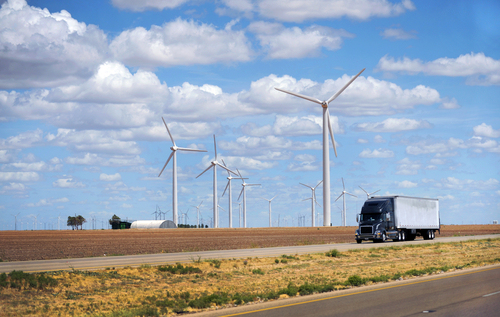
“Zoning Out”: Zoning is a common form of land use control. Another purpose is to “encourage the most appropriate use of the land.” Zoning legislation seeks to accomplish these objectives by encouraging appropriate land uses, stabilizing and preserving property values and preventing the overcrowding of land. The need for efficient wind energy zoning is becoming more prominent as wind power generates increasingly more of the United States’ total electricity each year.
The Center for Rural Affairs released a report entitled Zoned Out: An Analysis of Wind Energy Zoning in Four Midwest States.
According to Alissa Doerr, Center for Rural Affairs Legal Extern and author of the report, Zoned Out analyzes different approaches to zoning commercial wind energy systems in four different Midwest states – Iowa, Minnesota, Nebraska, and Wisconsin. The report also broke down the advantages and disadvantages of these approaches, and what makes for effective zoning standards.
“Wind energy zoning remains generally uncoordinated and subject to state and local regulations, resulting in a piecemeal approach where zoning standards vary between states and within states,” Doerr said. “In order for wind energy development to continue increasing, there must be an effective approach to wind energy zoning implemented that reduces inconsistency and unpredictability caused by the patchwork approach that is currently in place. The key is finding the right balance between local and state control.”
“As wind energy continues to grow rural economies and expand across the Midwest, controversies have arisen as well as questions from local communities,” continued Doerr. “How will this affect my community? What are the rules for wind energy development?”
“Zoning authorities must aim for efficient and effective standards, incorporating considerations from the local areas where wind development would take place,” Doerr added.
Doerr explained further that, the key to effective wind siting and zoning regulation is to strike the right balance between local and state control, avoiding some of the pitfalls for either approach, while trying to capture the benefits. Authorities at the state and local level must consider the pros and cons that can result from difference ordinances. The ideal balance should be focused on consistent standards that still allow for local autonomy.
“As wind power continues to play a bigger role in meeting our energy demands, it’s important that we craft regulations that incorporate local preferences and address local concerns, while also providing clear and consistent standards for developers.”
The introduction is re-posted here:
Introduction
Zoning is a common form of land use control. In 1926, the Supreme Court upheld the constitutionality of zoning as a valid exercise of police power as long as it promoted public health, safety, morals, or general welfare. Another purpose of zoning is to “encourage the most appropriate use of the land.” Zoning legislation seeks to accomplish these objectives by encouraging appropriate land uses, stabilizing and preserving property values and preventing the overcrowding of land.
There are several types of zoning classifications, including residential, commercial, industrial and agricultural. This paper focuses on wind energy zoning, specifically for commercial wind energy facilities. The need for efficient wind energy zoning is becoming more prominent as wind power generates increasingly more of the United States’ total electricity each year.
Wind power was the fifth largest electricity source in the United States in 2013, generating 4.13% of total electricity. Wind power’s contribution to the United States’ electricity generation portfolio is expected to increase as wind energy development continues to grow. At the beginning of 2014, there was 12,000 megawatts of wind energy capacity under construction. Growth of the wind energy sector creates jobs, tax revenues, and overall economic growth for a state. As wind energy development increases, it is critical for government officials to have effective wind energy zoning in place.
Part I of this paper outlines the various approaches to wind energy zoning practiced in the United States. Part II reviews current methods of regulating wind energy development in the Midwest, including the states of Iowa, Minnesota, Wisconsin, and Nebraska. Part III analyzes state and local control of wind energy regulations and recommends a combination of state and local governance of wind energy facilities for developing effective commercial wind energy zoning ordinances that encourage wind energy development.
Read the full report at this link.
The Center for Rural Affairs
www.cfra.org/
Filed Under: Construction, News




